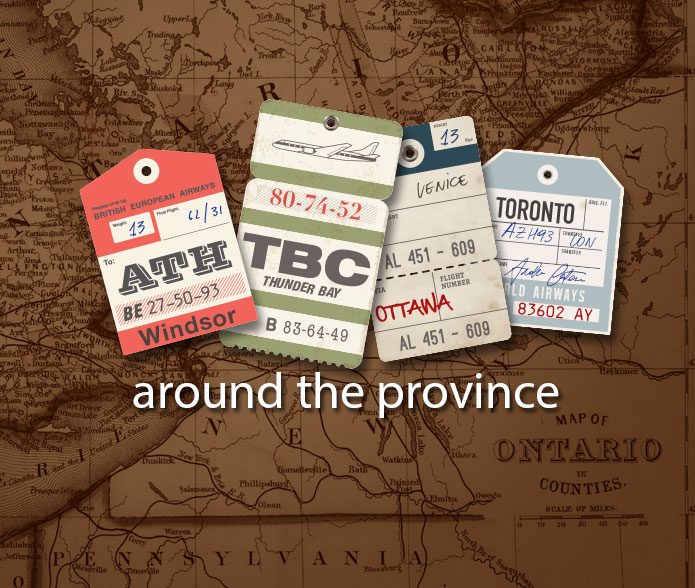Learn about the benefits of constructing a multi-year internship from a MLIS student's perspective.
Craig Heron: Canada’s tough new labour market
Craig Heron. Photo credit: Canadian Historical Association
Craig Heron is a labour historian at York University and the author of many articles and books on the social history of work and workers in Canada, including Working in Steel and Booze: A Distilled History. As president of the Canadian Historical Association (2007 – 2009), he was deeply involved in critical dialogue with Library and Archives Canada and has also recently been active in the York University Faculty Association.
Heron was the keynote speaker at the 2013 OCULA Spring Dinner held at York University on May 16. He answered the following questions for InsideOCULA.
Q. As a labour historian, you have written extensively about Canadian workers. What challenges do working Canadians face today?
A. Today we have a new labour market. Unemployment levels have been much higher since the 1970s—partly as new, computer-driven technology has been introduced into the workplace and as workforces have been downsized—and currently 20% of Canadians between the ages of 25 and 34 are unemployed.
Employers are also striving to reduce employee costs overall. For example, our workforce has been casualized, i.e., more new employees are hired on a casual rather than a full-time basis. Plus, many people work shorter hours, are paid less, or find that their jobs are outsourced to other companies.
Public sector union employees (including those at universities and colleges) face additional challenges such as the disruption of normal collective bargaining practices. Last year, the Ontario government legislated the teachers’ contract while the Harper government signalled to both Air Canada and Canada Post workers that they would be forced back to work if they went on strike.
Plus these employees are increasingly portrayed as “fat cats” who are not like “the rest of us” because they have the power to get “precious tax dollars” for benefits such as pension plans. Yet public sector working conditions used to exist in the private sector and were considered exemplary.
Q. What factors underlie these challenges?
A. Private sector activities drive everything these days and can be traced back to changes in government policy in the 1970s.
After World War II, Canada’s government had a commitment to full employment and, by the early 1970s, unionized Canadians had achieved a relatively high standard of living through collective bargaining. However, in 1975, at a time of high inflation, the federal government introduced wage and price controls as well as a new economic approach—monetarism.
Everything was now up for grabs. Over the next four decades, employers began pushing aggressively for the easing of constraints on business and we increasingly faced a world without government intervention where public policies supported the international mobility of capital (e.g., NAFTA), taxation cuts, deregulation, privatization, private-public partnerships and the dismantling of welfare programs.
These public policy changes had two major outcomes. One, our economy was significantly restructured. Our established industries were disrupted, manufacturing most of all, and in November 2011 the level of employment in manufacturing was the lowest it had been since Stats Canada first started keeping records in 1976. Two, we now have a neoliberal state with a flat-out policy to weaken public and private sector labour organizations.
Q. How are Canadians responding to these challenges?
A. In the current economic environment, both public and private sector managers argue that the need for austerity, restructuring and cost cutting is inevitable and makes “common sense”. This hits the public sector more and more and unionized employees are faced with making one concession after another so the mentality at the bargaining table is “hold onto what you’ve got.”
The solution is to reach out for broader public support and build alliances among diverse groups of public sector workers. This strategy has worked, particularly for libraries and archives.
In 2007, the protest to prevent the University of Toronto’s Victoria College from reneging on its deal to maintain the United Church archives gained support from an unimagined base of support including musicians and novelists. In the past year public protest reduced the cutbacks to the Toronto Public Library.
Today, most unionized workers are in the public sector and for the first time in history, a slight majority are women. These workers are trying to talk back, to say “why would anyone work for minimum wage?” Although there is currently no place for alternate voices—organizations such as the Centre for Policy Alternatives find their reports buried by the media or not mentioned at all—I am cautiously optimistic that a groundswell of support is possible.
Q. What do you think of the recent staffing and program cuts at Library and Archives Canada?
A. Since the 1990s, there has been a selective downsizing of the national state. We now have larger prisons but fewer knowledge workers. The federal government has been particularly savage with organizations such as Library and Archives Canada (LAC).
In addition, increasingly senior public sector managers are disconnected from the programs they run. Daniel Caron was the first head of our national archives since 1937 without a Ph.D. in history. Yet the issues are not about personalities—Caron’s departure will not necessarily make any difference if the new managerial direction he introduced (so-called “modernization”) continues. The professional integrity of librarians and archivists must be restored—without a draconian Code of Conduct to muzzle them. It is deplorable that a private institution will control the digitization of archival documents and charge researchers for access. This development must be resisted vigorously since LAC sets the pace for so much of the library and archival practices in Canada.
Martha Attridge Bufton, InsideOCULA editor-in-chief.

